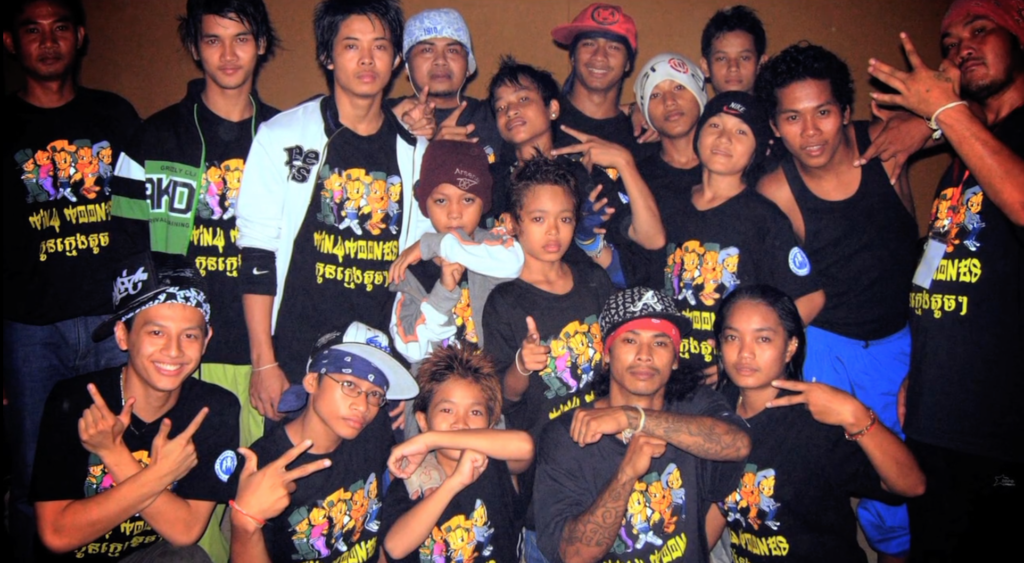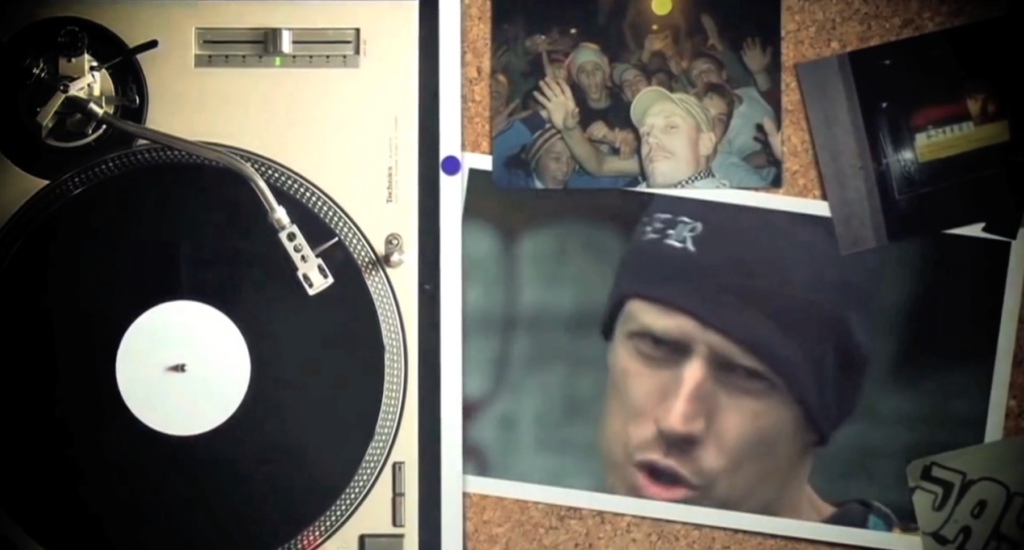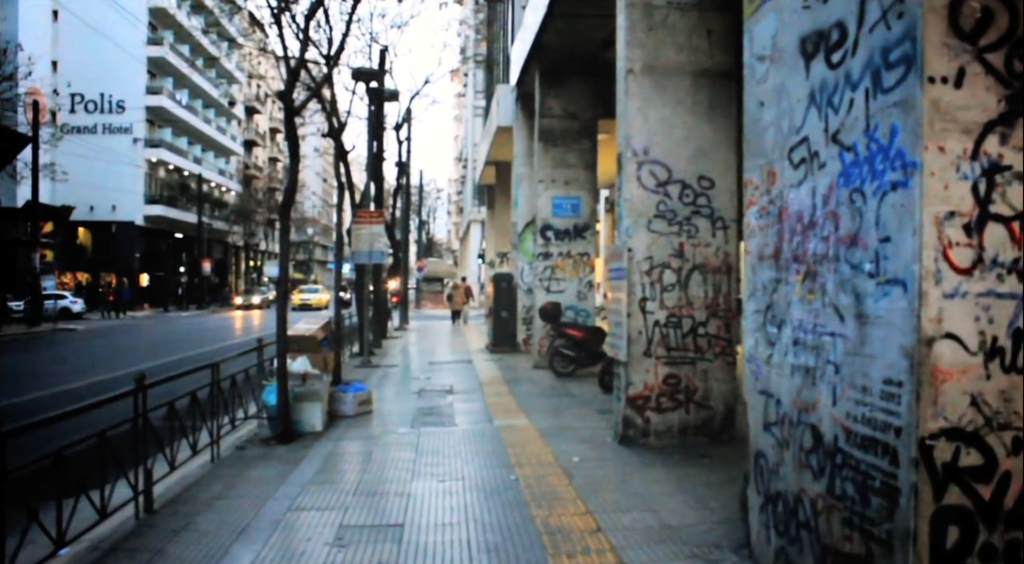This is not a sponsored post. We believe in the content being promoted here.
Just a couple years away from its 50th birthday, hip-hop has become something unimaginable. The culture has expanded at a breakneck pace. The music, of course, has come right along with it.
Hip-hop is the most popular genre of music in the United States and the fourth-most popular genre in the world as of 2019. More than 20 percent of 16 to 24-year-olds in South Africa, Poland, Germany, France, and Russia say hip-hop is their favorite music to listen to. Some youth even consider it…a way of life.
Awful jokes aside, you’d be shocked if you took a brief trip down hip-hop’s American timeline up until Lil Uzi Vert’s 2020 highlight Eternal Atake: “Hip, hop, the hippie,” to, “These, are, the breaks!” to “Fuck Tha Police.” Then The Chronic, Big and Pac, Hov, and, “Takin’ over for the ’99 and the 2000.” Band-Aids on faces, 4X white-Ts, an art school dropout in a polo, DatPiff, blogs, an emotional biracial Canadian kid, SoundCloud, and skrrr…
We’re here.
In the flurry of activity that is American hip-hop culture today—GOAT this, TikTok that, and the thrashing of rap purism—it’s hard to keep up with the various adaptations of hip-hop throughout the world. But what’s special about Industry #1’s A Way Of Life is how the documentary enforces a key principle of hip-hop: they have to learn us.
It’s crucial for hip-hop to be aware of itself as it continues to grow. A documentary that gives shine time to smaller scenes around the world certainly works toward that goal. Without further ado, my thoughts on A Way Of Life: A Global Hip-Hop Film.
First Impressions
The sheer number of countries represented by A Way Of Life is impressive and enviable as we weather the COVID-19 pandemic. Artists from Brazil, Norway, Ghana, Greece, India, Cambodia and more receive ample time to tell their origin stories and illustrate how much their lives and countries evolved once hip-hop nestled in and gripped the ground with its roots.
The two-hour film trots the globe at a steady pace, establishing a couple of key figures in each nation and periodically revisiting them as the running conversation about hip-hop’s value and future shifts. A Way Of Life is characterized by an organic, underground feel embodied by the humble and insightful artists it features, including American legends KRS-One and Jeru the Damaja, and decades-long veterans such as Brazil’s Marcelo D2 and England’s Rodney P.
Watching A Way Of Life felt like a look backwards at first. So many hip-hop scenes around the world still enraptured by good old-fashioned breaking, spray paint and boom-bap beats. But the keyword there is enraptured. The original pillars of hip-hop, it seems, are still plenty enough for the globally marginalized to stand on.

I saw how serious graffiti was to Swiss and French artists of color who only felt seen through their tags. Fittingly, they didn’t feel safe showing their full faces in the doc. I witnessed the power of a rhythmic chant, bare-bones rap, in lifting a community’s spirit in war-torn Syria. I felt the connections these chants created to rappers of the Arab diaspora a world away from home. I learned how reggae and garage music were enmeshed by UK hip-hop artists into grime. I then saw grime put to use to immortalize the 2017 Grenfell Tower tragedy, a major bullet point in the global BLM movement that will never find closure.
A Way Of Life made it unbelievably clear to me that hip-hop, in most of the world, is still analog. Digital innovation has made elements such as IG Live snippets, VSTs, and content algorithms essential parts of the culture. Meanwhile, even in countries more well-off than the United States, hip-hop’s most ardent participants are on the block doing cyphers, tagging everything in sight, and teaching youth how to pop and lock.


The artists that took up more space in the documentary didn’t waste a single word. There was a sharpness to the historical and personal accounts of hip-hop’s evolution when artists such as Brazilian battle rapper Emicida and Canada’s Narcicyst graced the screen.
Pulling all of their insights together were a couple of well-placed injections of KRS-One, a hip-hop grandfather who looked past barriers of race and nationality with ease as he did a backstage interview in Poland:
We are now instigating intelligence. If Polish MCs are speaking in Polish, I would say that’s good for us to learn. It’s not that [Polish MCs] should somehow perform to American values or African-American language. It’s for us to now learn the other languages that hip-hop’s going into.
Contemporary hip-hop movements such as trap and drill were left untouched. While a global hip-hop film implies a greater scope and aim to connect, the film’s focus was ultimately refreshing. A Way Of Life was immersed in its own value of not catering to what’s hot, giving its undivided attention to the stories of every b-boy, b-girl, graffiti artist, MC and DJ encountered.
Takeaways
This documentary reinforced the belief that hip-hop can never be centralized. There will always be hotspots and leaders, sure, but it’s a form of expression that rewards artists for making people step into their world. A completely uncompromising art form who’s artists are forced to compromise too much in their daily lives.
The sin of watering down your content to be more appealing isn’t unique to hip-hop, but the endlessness of struggle, oppression, and the codes we use to describe it—the infinite reality of “the streets”—is something only hip-hop can capture, no matter how far it travels from its concrete manger in the Bronx.
Toward the end, A Way Of Life asks if hip-hop’s core principles will be preserved by the next generation. You know, once Gen Z grows up and Gen X Æ A-12 is running around sending mp3s with 10th-gen Google Smart Glasses. The documentary answered many questions about hip-hop’s role in the world that were largely unasked, but it also raised questions we don’t have answers to yet. Below are a few of them.
Further Discussion
Will Hip-Hop’s Original Pillars Crumble?
Stateside, breakdancing has largely been replaced by the next 14-year-old girl’s bedroom choreography. The reckless memes and opinions that define Hip-Hop Twitter paint the digital world the same way graffiti marked buildings and trains in metros across the country. DJs exist, but the MC is now paired with a producer, a master of software and metadata rather than turntables. And the MC? “Melody Creators” as much as they are “Masters of Ceremony” these days.
I don’t think hip-hop’s four original pillars have been bastardized, just adapted. Each pillar has undergone a major facelift thanks to the internet, with our relationships to dance and public art changing the most. While the art of rapping and the definition of a DJ/producer have both shifted greatly, the essences of a vocalist with something to say and a musical partner-in-crime are the simplest, most essential aspects in hip-hop.
People are bound to contribute new forms of dance, visual art, rapping, and instrumentation to hip-hop. In this sense, none of the pillars will crumble. But depending on the point in time, a couple of pillars might be more unrecognizable than others from their original forms.
Can Hip-Hop Be Globally Synergized?
Hip-hop culture has grown large enough to house dozens of subgenres relatively peacefully. As A Way Of Life demonstrated, there are many different scenes around the world existing in untouched pockets of space and time. As far as Western hip-hop, particularly the American scene (a broad label) goes, one could even say some international hip-hop scenes are “uncontacted,” like an indigenous tribe deep in a rainforest.
Not only do these uncontacted scenes need to be actively involved, but a shared desire to step into other realities is a must. I rag on my fellow Americans regularly when it comes to engaging foreign hip-hop cultures, but it’s understandable that people give more energy toward what’s going on at home.
Current leaders in world hip-hop, namely American artists and figures, will have to take lead if bridging gaps across oceans and language barriers ever becomes a popular shared goal. I believe KRS-One modeled this very well in the documentary. Not to take away from other American artists featured like Jeru, Onyx, and M1, but it’s clear KRS’ philosophical approach to the culture did not stop once the fame and sales turned down.
A Way Of Life is a break from the chaotic cycle of content today’s screen-tapping hip-hop consumers—myself included—are usually mired in. As much as I wanted to see stronger connections between the upholders of hip-hop’s roots and the many beautiful bloomers of today, the documentary works to make the viewer realize many of hip-hop’s flowers don’t come in Balenciaga footwear rapping over 808 patterns.
Shots of aboriginal Australians freestyling in the back of a truck and a multiracial street drum ensemble in Athens are what made A Way Of Life special. Those images said despite hip-hop becoming a commercial behemoth, it is still the medium people turn to when they want to create something out of nothing. For this reason, no matter how the culture and music look and sound in the future, it’s hard to imagine the world’s marginalized people will let its soul die. A Way Of Life captures this precious truth intimately.
Thank you Shibe, Andre, and Industry #1 Films for the privilege of an early viewing. One love.
